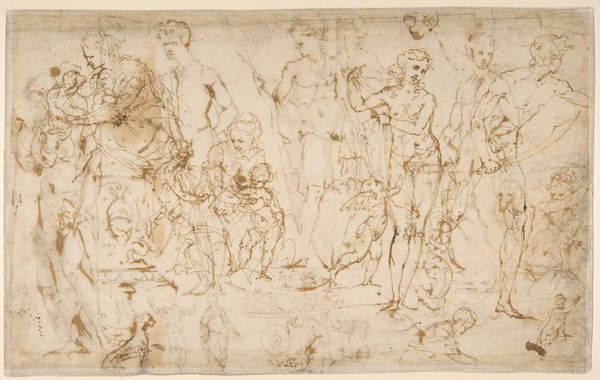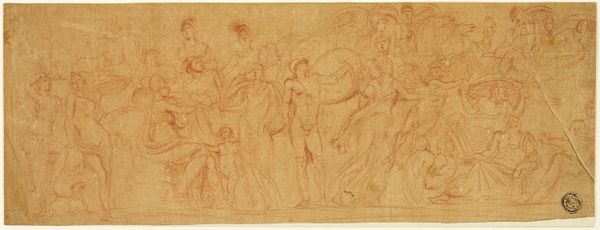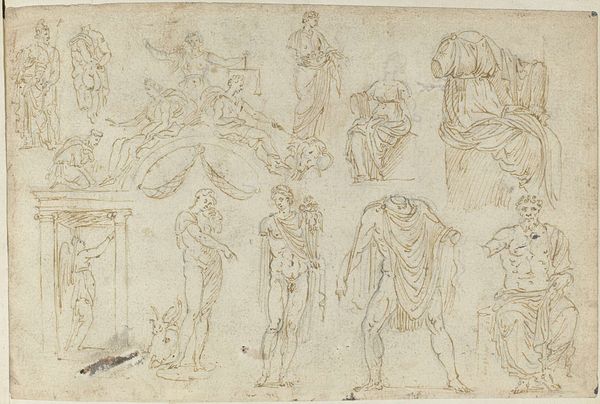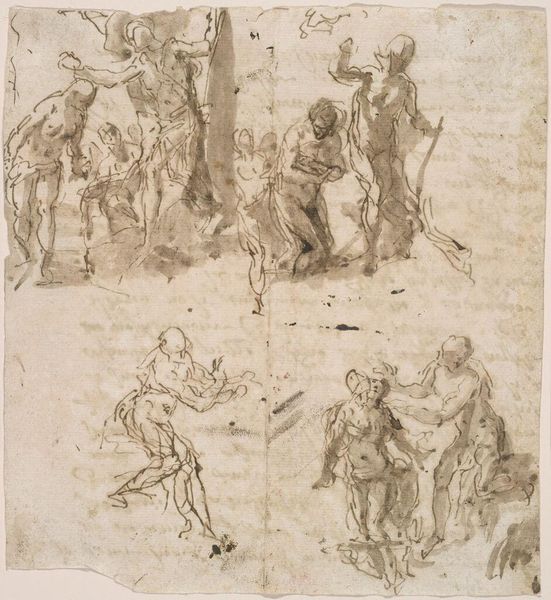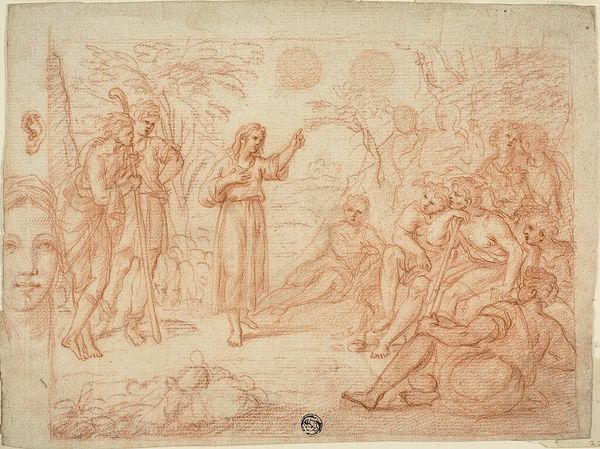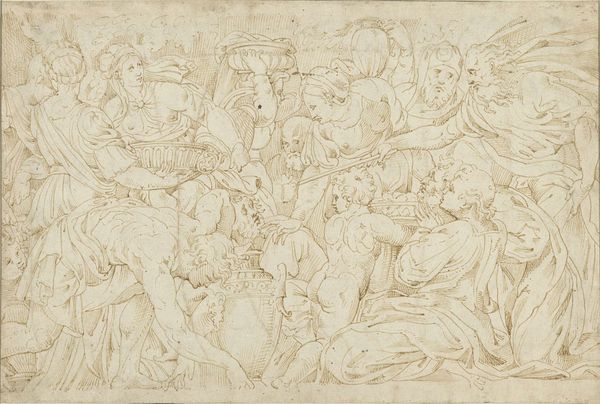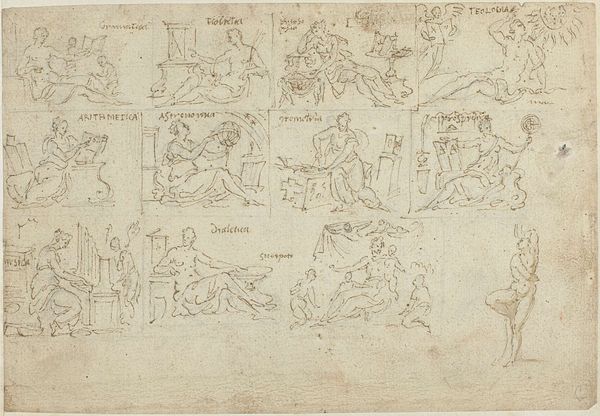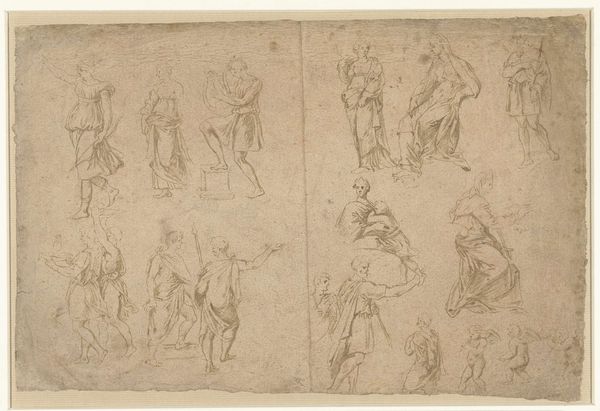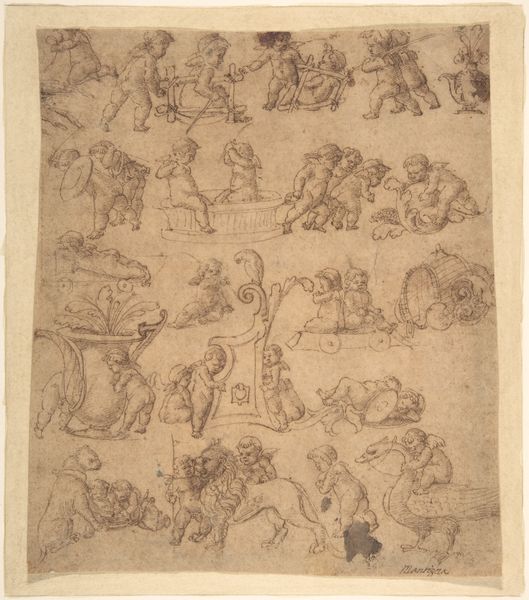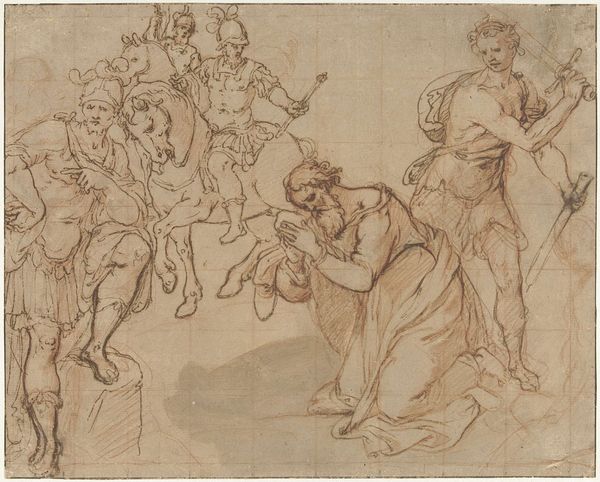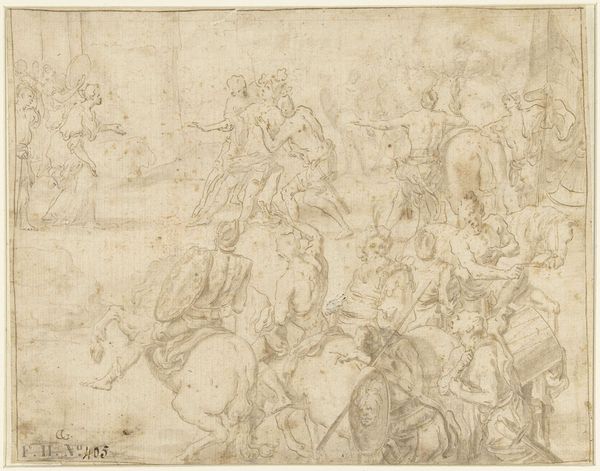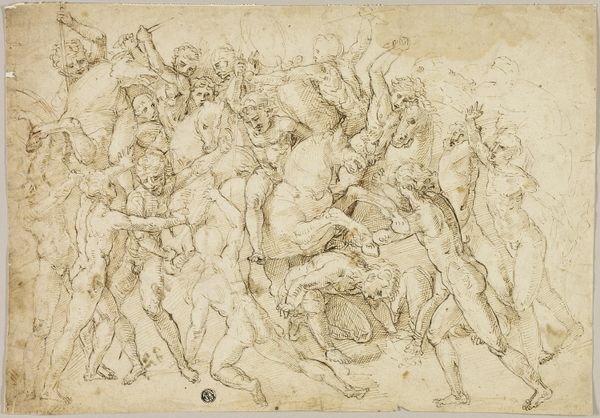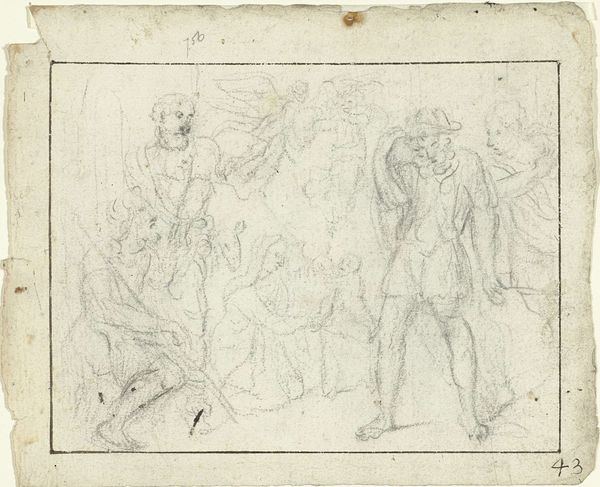
drawing, ink, pen
#
drawing
#
allegory
#
pen sketch
#
figuration
#
11_renaissance
#
ink
#
line
#
pen
#
history-painting
#
italian-renaissance
Dimensions: height 153 mm, width 225 mm
Copyright: Rijks Museum: Open Domain
Curator: Here we have "Beelden en prenten," which translates to "Images and Prints," an ink and pen drawing, dating from around 1550 to 1570 by an anonymous artist of the Italian Renaissance. Editor: Immediately, I’m struck by the chaotic energy – a series of vignettes rather than a cohesive whole, each densely populated with figures and symbolic objects. Curator: Yes, the composition directs us to consider each grouping individually and what they are allegorically communicating through the depictions of labor within Italian Renaissance society. For instance, notice how various allegories play on representations of chariot processions that relate to commerce. Editor: It is difficult to see this beyond the aesthetics without prior context, but if you consider each figure, they do feel placed deliberately—for example, in one vignette, a lion appears above the people pulling a chariot, so the intended meaning becomes clearer after you consider the line weights or positive-negative form relations across scenes. Curator: Absolutely. And beyond line weight and form, note the artist's strategic use of the medium itself – pen and ink, materials readily available in a workshop setting, indicative of the piece's potential use as a preliminary design, circulated among craftsmen or patrons. Editor: One can interpret a great deal from what materials artists engage with, although, there seems to be a kind of dance between structure and symbolism, with specific relations being depicted through various art forms and allowing us insight into a creator's psyche. Curator: Indeed. Perhaps this work speaks to the broader artistic exchanges that allowed the labor force in Italy during this time to flourish, allowing the accessibility of production and manufacturing of items like these. The lack of artist attribution is, unfortunately, something that comes standard within craft making from this time; do you believe it is right to associate such pieces to that level? Editor: Such cultural commentary requires external context and it cannot always be readily understood through simple appreciation of an aesthetic nature, without that extra insight that this artwork provides it would become much more inaccessible in an aesthetic sense to observers today. Curator: Agreed. It's fascinating to consider what insights can be uncovered with an examination into the modes of its creation during Italian renaissance times. Editor: It highlights how deeply intertwined artistic practices and social fabrics truly are.
Comments
No comments
Be the first to comment and join the conversation on the ultimate creative platform.
